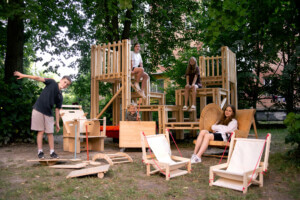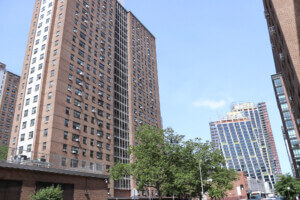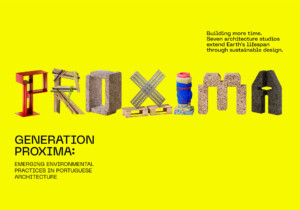There is no direct English translation for the Indian word ‘jugaad,’ but the gist of it is to “make do.” But simply “making do” does not aptly describe the clever and resourceful strategies on display in Jugaad Urbanism: Resourceful Strategies for Indian Cities, a new exhibit at the Center for Architecture that opens tomorrow night. For the most part the exhibit shirks high design in favor of “design by the people, for the people.”
“The concept itself came about when we looked at the cities,” said Kanu Agrawal, the exhibit curator. “There was a tragic narrative that they’re over populated; they’re messy. But somehow things work—not in a banal way but in a creative way. We found that jugaad existed in so many ways.”
The exhibit is organized around resources, such as land, water, energy, and transportation and culls the material from communities in Delhi, Mumbai, Ahmedabad and Pune. Video, photos, graphics, renderings and object displays develop a narrative detailing how NGOs and designers can draw inspiration by observing the everyday survival of the India’s poor.
While some of the developed designs are relatively inexpensive, not all are cheap—especially when it comes to dealing with land. A good portion of the exhibit examines proposals for preservation and renovation of chawls, the multistoried tenements endemic of Mumbai. “Land projects are a little more difficult because of the politics and land development,” said Rosamond Fletcher, the Center’s director of exhibitions. “I think that there is some hope for the historic fabric.” The implication is that rather then leveling Mumbai’s chawls, they could be recast and redeveloped as an integral part of the city’s character, as was done with Wapping in London or Lower East Side in New York.
A good portion of the exhibit studies waste management, particularly that of humans. One device on display is a porcelain toilette pan with two compartments that separates the waste for better management. Cast off tobacco packages get recycled into corrugated plastic material. Throughout the space, American milk crates get the jugaad treatment with cushions covered in gold satin.
When pressed to pick one object on display that really attracted them, Agrawal and Fletcher both said they were drawn to the e-charka, an energy generating spinning machine. Besides the obvious cultural connections, to Gandhi in particular, both said the machine is loaded with symbolism. “It’s such a fascinating little piece. It’s quirky and humorous but at the same time its really serious,” said Agrawal. The energy from the machine powers a transistor radio and a small lamp with a decorative plastic shade. It’s the flourish of the shade that intrigues Fletcher. While lifting it up she points to the shade’s curved outline. “Everyone needs that added layer,” she said.










